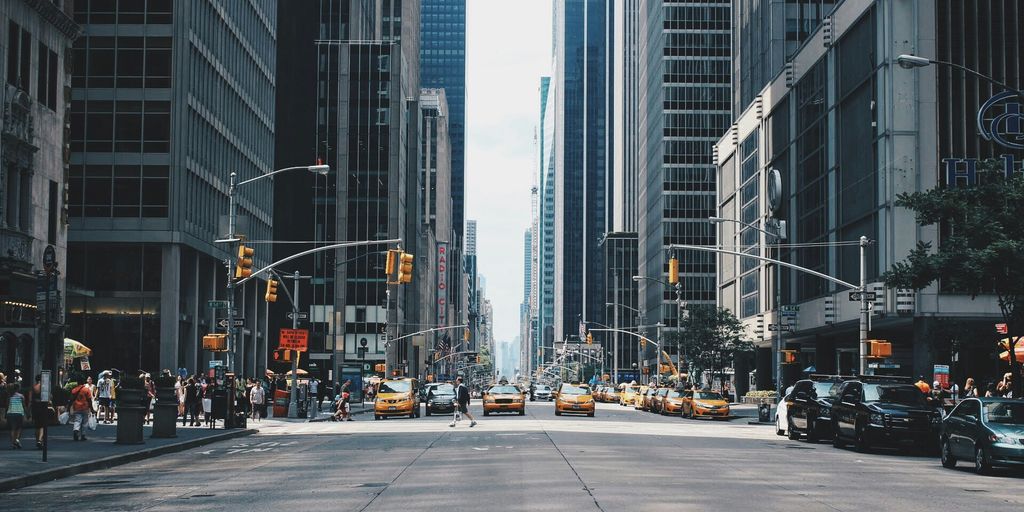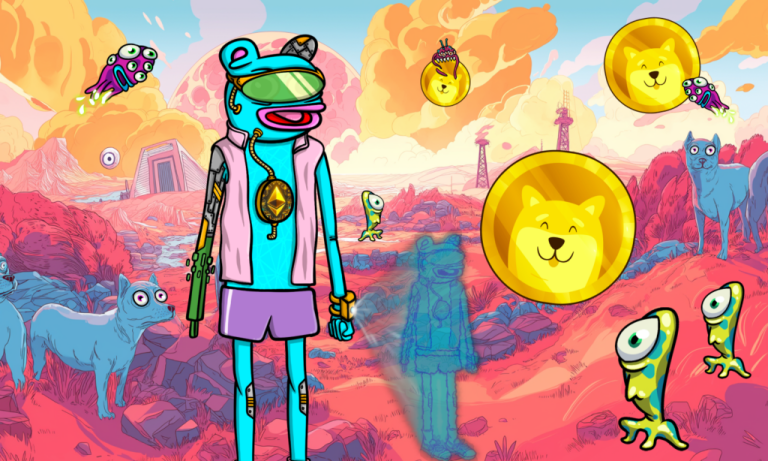
Cosmopolitan culture is all about embracing diversity and the rich experiences that come from living in urban areas. It’s a blend of different traditions, foods, and lifestyles that make cities vibrant and exciting places to live. In this article, we’ll explore what it means to be cosmopolitan, how to navigate urban environments, and the unique experiences that come with living in a city filled with diverse cultures. From food to art, and sustainability to social connections, we’ll cover all the essentials that make modern urban living truly cosmopolitan.
Key Takeaways
- Cosmopolitanism thrives on diversity and cultural exchange, enriching urban life.
- Accessible public transportation and walkable neighborhoods enhance city living.
- Culinary experiences reflect the global nature of cosmopolitan cities.
- Art and culture play a vital role in shaping community identity and engagement.
- Sustainable practices are key to maintaining livable urban environments.
Understanding Cosmopolitan Identity
Defining Cosmopolitanism
So, what is cosmopolitanism, really? It’s more than just liking fancy coffee and knowing a few foreign phrases. It’s about having an open mind and a willingness to engage with different cultures. It’s that feeling of being at home, or at least comfortable, almost anywhere in the world. It’s about seeing the world as your neighborhood, not just your town. It’s a mindset, a lifestyle, and a way of interacting with the world around you. It’s also about recognizing our shared humanity, even when we come from very different backgrounds.
The Role of Diversity
Diversity is the bedrock of cosmopolitan culture. Without a mix of people, ideas, and traditions, you just have a homogenous blob. Think of it like this: a city with only one type of restaurant is boring, right? Same goes for culture. Diversity brings new perspectives, challenges old assumptions, and sparks innovation. It’s not always easy – there can be friction and misunderstandings – but that’s part of the process. It’s through these interactions that we learn and grow. Diversity isn’t just a nice-to-have; it’s essential for a thriving cosmopolitan environment.
Cultural Exchange in Urban Spaces
Urban spaces are where cultural exchange really happens. Think about it: street festivals, international markets, language exchange groups. These are all opportunities to connect with people from different backgrounds and learn something new. It’s about being curious and willing to step outside your comfort zone. It’s about trying new foods, listening to different music, and engaging in conversations with people who have different experiences than you. It’s also about being respectful of other cultures and avoiding stereotypes. Cultural exchange isn’t just a one-way street; it’s about mutual learning and understanding.
Cosmopolitanism isn’t about erasing differences; it’s about celebrating them. It’s about finding common ground while still appreciating the unique qualities that each culture brings to the table. It’s about building bridges, not walls.
Navigating Urban Spaces
Public Transportation and Accessibility
Okay, let’s be real, public transit can be a mixed bag. But in a cosmopolitan city, it’s usually your best bet for getting around without losing your mind (or your parking spot). Think subways, buses, light rail – the whole shebang. The key is accessibility. Are there enough routes? Do they run frequently enough? Is it easy to understand the system? If the answer to any of those is no, then you’ve got a problem. But when it works, it’s magic. I remember this one time in Chicago, I hopped on the ‘L’ and ended up in Wrigleyville for a Cubs game. Spontaneous adventures, that’s what it’s all about. Cities need to invest in public transit to make it a viable option for everyone, not just those who can’t afford a car.
The Importance of Walkability
A walkable city is a livable city. Period. I mean, who wants to live in a place where you have to drive everywhere? Not me. Walkability means more than just sidewalks, though. It’s about having things to walk to – shops, restaurants, parks, you name it. It’s about feeling safe and comfortable while you’re walking. Wide sidewalks, streetlights, trees, benches – these things matter. I love wandering around new neighborhoods on foot, just soaking it all in. You notice so much more when you’re not stuck behind the wheel. Plus, it’s good for your health. Win-win.
Creating Safe and Inviting Environments
Safety is a big deal, obviously. No one wants to feel like they’re taking their life into their hands just by walking down the street. But it’s not just about crime rates. It’s about creating a sense of community and belonging. Well-lit streets, active storefronts, public art – these things can make a huge difference. I’ve noticed that places with lots of people out and about, even late at night, tend to feel safer. There’s a kind of collective awareness, a sense that everyone’s looking out for each other. And that’s what makes a city feel like home. Here are some ways to improve the urban experience:
- More street lighting
- Community watch programs
- More green spaces
Cities are complex organisms, constantly evolving. Creating safe and inviting environments requires a holistic approach, one that considers the needs of all residents and fosters a sense of shared responsibility.
Culinary Adventures in Cosmopolitan Cities
Global Cuisine and Local Flavors
Cosmopolitan cities are melting pots of culinary traditions, where you can find authentic dishes from around the globe alongside innovative creations that blend international flavors with local ingredients. It’s a foodie’s paradise! From hole-in-the-wall eateries serving up family recipes to upscale restaurants pushing culinary boundaries, there’s something to satisfy every palate. You can grab some tacos, then head over for some sushi, and finish it off with some gelato. The possibilities are endless!
Food Markets and Street Vendors
Food markets and street vendors are the heart and soul of any cosmopolitan city’s food scene. These bustling hubs offer a sensory overload of sights, smells, and tastes, providing a unique opportunity to sample a wide variety of dishes and ingredients. You can find everything from fresh produce and artisanal cheeses to exotic spices and ready-to-eat meals. Plus, it’s a great way to experience luxury dining and connect with the local community. Here are some things you might find:
- Freshly baked bread
- Locally sourced honey
- Handmade pasta
Dining Experiences that Reflect Diversity
Dining in a cosmopolitan city is more than just eating; it’s an experience that reflects the city’s diversity and cultural richness. Restaurants often serve as cultural ambassadors, showcasing the traditions and flavors of their respective countries or regions. Whether you’re attending a traditional Ethiopian coffee ceremony, enjoying a multi-course tasting menu at a Michelin-starred restaurant, or simply sharing a plate of tapas with friends, dining in a cosmopolitan city is an opportunity to expand your horizons and connect with people from all walks of life.
Food is a universal language that brings people together. In cosmopolitan cities, this language is spoken in countless dialects, each with its own unique flavor and story. Exploring the culinary landscape of these cities is a journey of discovery, a celebration of diversity, and a testament to the power of food to connect us all.
Art and Culture in Urban Life

The Influence of Street Art
Street art is everywhere these days, and it’s not just random tags anymore. You see huge murals, stencils, paste-ups – it’s a whole movement. Street art gives a voice to people who might not have one otherwise. It can be political, funny, beautiful, or just plain weird. It definitely adds character to a city. I think it’s cool how it can transform a boring alley into an outdoor gallery.
Cultural Festivals and Events
Cities are always buzzing with something. It could be a music festival, a food fair, a film screening, or a parade. These events bring people together and show off the city’s personality. I went to a local festival last summer, and it was awesome seeing so many different cultures represented.
Here are some common types of cultural events:
- Music Festivals
- Food Festivals
- Art Fairs
- Film Festivals
Museums and Galleries as Community Hubs
Museums and galleries aren’t just places to see old stuff. They can be real community hubs. They host workshops, talks, and events that get people involved. Plus, they’re a great way to learn about different cultures and ideas. I love how some museums are starting to offer free admission days, making art more accessible to everyone.
Museums and galleries are evolving. They’re not just about displaying artifacts; they’re about creating experiences and sparking conversations. They’re becoming more interactive and inclusive, which is a good thing for urban communities.
Sustainability in Cosmopolitan Living
Green Spaces and Urban Parks
Okay, so, cities are concrete jungles, right? But they don’t have to be. Think about Central Park in NYC or Golden Gate Park in San Francisco. These aren’t just pretty spots; they’re vital for our well-being. They clean the air, reduce the heat island effect, and give us a place to chill. More green spaces means happier, healthier city dwellers. It’s that simple. Urban parks are essential for the health of city residents.
- Improved air quality
- Reduced urban heat island effect
- Opportunities for recreation and relaxation
Sustainable Transportation Options
Cars? Not the future. We need to ditch the gas guzzlers and embrace alternatives. Think bike lanes, electric scooters, and expanded public transit. Make it easy and convenient for people to choose eco-friendly ways to get around. Less traffic, cleaner air, and a quieter city? Yes, please! public transit is key.
- Bike-sharing programs
- Electric vehicle charging stations
- Prioritizing pedestrian and bicycle infrastructure
Community Initiatives for Environmental Awareness
It’s not just about what the city does; it’s about what we do. Community gardens, recycling programs, and educational workshops can make a huge difference. When people get involved, they become more aware and more likely to make sustainable choices. Let’s build a culture of environmental responsibility, one neighborhood at a time.
Getting everyone on board with sustainability is a challenge, but it’s totally doable. Start small, focus on education, and make it fun. People are more likely to participate if they see the benefits and feel like they’re part of something bigger.
Social Dynamics in Cosmopolitan Areas

Building Community Connections
Cosmopolitan areas are melting pots, but that doesn’t automatically mean everyone feels connected. It takes effort to build real community. Think about it: you’ve got people from all walks of life, different backgrounds, and varying levels of comfort in a new place. The key is creating spaces and opportunities for interaction. This could be anything from local volunteer groups to shared community gardens. It’s about finding common ground and breaking down those initial barriers. I’ve seen neighborhoods transform when residents start organizing events, like block parties or skill-sharing workshops. It’s amazing how quickly people bond when they’re working together on something they care about. It’s not always easy, but the rewards are huge – a stronger, more resilient community where everyone feels like they belong. Check out the benefits of cosmopolitanism.
The Impact of Technology on Urban Life
Technology is a double-edged sword in cosmopolitan cities. On one hand, it connects us in ways never before imagined. We can video call family across the globe, order groceries with a few taps, and access information instantly. This hyper-connectivity can be amazing, but it also has its downsides. Think about how much time we spend staring at screens, often at the expense of real-life interactions. It’s easy to get lost in the digital world and forget about the people around us. Plus, there’s the issue of digital inequality – not everyone has equal access to technology, which can create further divisions within a community. Finding a balance is crucial. We need to use technology to enhance our lives, not replace them. Maybe that means setting aside dedicated screen-free time, or supporting initiatives that bridge the digital divide.
Addressing Social Inequality
Cosmopolitan cities often boast incredible wealth and opportunity, but this prosperity isn’t always shared equally. Social inequality can be a major issue, with some residents struggling to afford basic necessities while others live in luxury. This disparity can lead to tension and resentment, undermining the sense of community. Addressing this inequality requires a multi-faceted approach. It’s about creating affordable housing, providing access to quality education and healthcare, and ensuring that everyone has a fair chance to succeed. It also means challenging systemic biases and promoting social justice. It’s a complex problem with no easy solutions, but it’s essential for creating a truly inclusive and equitable cosmopolitan society.
It’s easy to overlook the less fortunate when surrounded by the hustle and bustle of city life. But a truly cosmopolitan society is one that cares for all its members, regardless of their background or economic status. It’s about creating a safety net for those who need it and working towards a more just and equitable future for everyone.
Here are some ways to help:
- Volunteer at a local food bank.
- Support organizations that provide affordable housing.
- Advocate for policies that promote social justice.
The Future of Cosmopolitan Urbanism
Trends Shaping Urban Development
Urban development is changing fast. We’re seeing a big push for smart cities, using technology to make things more efficient. Think sensors that monitor traffic, energy use, and even air quality. These innovations aim to improve quality of life and reduce environmental impact. But it’s not just about tech; there’s also a growing focus on mixed-use developments, combining residential, commercial, and recreational spaces to create vibrant, walkable neighborhoods. People want convenience and community, and these trends reflect that.
Adapting to Climate Change
Climate change is forcing cities to rethink everything. We’re talking about rising sea levels, extreme weather events, and increased temperatures. Cities need to become more resilient. This means investing in infrastructure that can withstand these challenges, like improved drainage systems and stronger buildings. Green infrastructure, such as parks and green roofs, can also help mitigate the effects of climate change by absorbing rainwater and reducing the urban heat island effect. It’s a huge challenge, but also an opportunity to create more sustainable and livable cities.
Innovations in Urban Living
Urban living is constantly evolving. New technologies and ideas are changing how we live, work, and play in cities. Shared mobility services, like bike-sharing and ride-hailing, are becoming more popular, reducing the need for personal vehicles. Co-living spaces offer affordable housing options and a sense of community. And urban agriculture is bringing food production closer to home. The key is to embrace innovation while ensuring that it benefits everyone, not just a select few.
Cities are complex systems, and the future of urban living will depend on our ability to adapt and innovate. We need to prioritize sustainability, resilience, and equity to create cities that are not only smart and efficient but also inclusive and livable for all.
Wrapping Up the Urban Experience
In the end, living in a city is all about embracing the chaos and charm that comes with it. Cosmopolitan culture isn’t just a buzzword; it’s a way of life that shapes how we connect with each other and our surroundings. Whether it’s the food, the art, or the diverse people we meet, every corner of the city has something to teach us. Sure, it can be overwhelming at times—traffic jams, crowded trains, and noise can wear you down. But if you take a moment to appreciate the little things, like a street musician playing your favorite song or a hidden café with the best coffee, you start to see the beauty in urban living. So, as you step out into your city, remember to soak it all in. Explore, engage, and enjoy the unique vibe that makes your urban experience truly special.
Frequently Asked Questions
What does cosmopolitan culture mean?
Cosmopolitan culture refers to a way of life that embraces a mix of different cultures and ideas, often found in big cities where people from various backgrounds live together.
How does diversity impact urban living?
Diversity brings different perspectives and experiences, which can enrich city life by creating a vibrant community where people share and learn from each other.
Why is public transportation important in cosmopolitan cities?
Public transportation helps people move around easily, reduces traffic, and makes it easier for everyone to access jobs, schools, and services.
What role do food markets play in urban culture?
Food markets are vital as they offer a taste of different cultures and provide fresh, local ingredients. They also create a lively atmosphere where people can gather.
How can cities be more sustainable?
Cities can be more sustainable by creating parks, promoting green transportation options like biking and walking, and encouraging community programs that focus on protecting the environment.
What are some challenges faced by urban communities?
Urban communities often face challenges like social inequality, crime, and the need for better infrastructure, which can affect the quality of life for residents.






